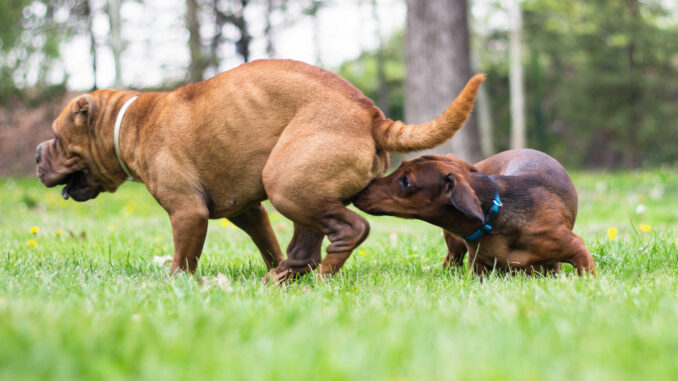
This article was updated on May 2nd, 2023
While it may be a completely natural behavior for any intact female dog, a dog in heat may be confusing for any dog parent. You’re bound to see some behavioral as well as physical changes that may have you wondering what is going on, how long it will last, and what you can do to help.
We’re here to help you identify the behaviors of dogs in heat so that you will better know what it looks like and why your dog is acting the way she is acting. We hope to also help clue you in on when her heat cycle will start so that you can prepare yourself and her for what is about to come.
When Do Dogs Go Into Heat?
Female dogs will have their first heat, or estrous, cycle when they reach puberty. This is a different age for every dog and it varies with breed. In general:
- small breeds reach puberty earlier, even as young as six months old
- larger breeds reach it later. Some large and giant breeds won’t have a heat cycle until 1 ½ -2 years old.
Most dogs will cycle twice per year, so go into heat about every six months. Again, this is a completely individual thing, so some may come in three times, mainly small breeds, and other only once.
How Do Dogs Act When in Heat? Behaviors by Stage
A dog’s heat cycle consists of four stages. Her behavior can change with each of these stages, and being able to identify which stage she is in will help you know when it’s time to breed her or if you don’t want puppies, keep her locked up. There will also be physical and clinical changes associated with each to further help clue you in. However, for some dogs, behavioral changes may be very subtle, especially in a dog’s first heat, so you may not notice many at all.
Stage 1: Pro-Estrus
This is when a dog’s body is preparing for estrus, or the stage where she can get pregnant. You may notice physical changes:
- some swelling of her vulva and
- even some bright red, bloody discharge.
and behavior changes:
- Male dogs could be hanging around, but your female isn’t going to be interested yet.
- She may even be a little irritated and aggressive with other dogs to let them know that she isn’t quite ready.
- Her energy levels may be a little decreased.
- You may see an increase in grumpiness or anxiety.
You can watch this short video below to see a female dog in heat in the pro-estrus stage (the female attracts the male but let him know she is not ready):
Pro-estrus can last anywhere from 9-27 days. During this time, the hormone estrogen is increasing rapidly to get the egg ready for ovulation.
Stage 2: Estrus
Estrus is when a dog is truly considered in heat. Physical changes include:
- Her vulva will still be swollen
- She will still have bloody discharge, however it may be more pinkish than red and waterier than in pro-estrus.
You might see the following behavior changes:
- This is when she will stop her aggressiveness towards males and can actually become pregnant.
- She’ll start to interact with male dogs and even present her hind end to them so that they can smell her pheromones.
- She may also start to urinate more frequently, or develop marking behavior. This can happen outside while on your walk, and occasionally some dogs will dog this inside. The pheromones in her urine are attractive to males and signal she is in heat.
- She may mount other dogs or allow household dogs (not just intact males) to mount her as well.
- She will flag her tail when male dogs are around, holding it off to the side
Most dogs are in estrus for around 9 days, but this can range from as few as 5 up to 21. You’ll know she’s no longer in heat once she is no longer receptive to male dogs.
You can watch this short video below to see the behavior of a female dog in heat in the estrus cycle:
Stage 3: Diestrus
Diestrus happens after your dog is no longer able to become pregnant. Physical changes include:
- Swelling and discharge decrease.
Behavior changes:
- Your dog will tell the males to hit the road and she will return to her normal self.
- Energy levels will return to normal and she will ready to socialize with other dogs in her normal way.
Diestrus lasts about two months, and is the same hormonally whether a dog is pregnant or not.
Stage 4: Anestrus
Anestrus is a dog’s recovery period. Lasting about four months, this is when her body gets set for the next estrous round. She will physically look normal, with no swelling or discharge, and will act like she did before going into heat.
Dogs in Heat: Pictures of Physical and Behavior Changes
To give you a better idea of what the behaviors of a dog in heat look like, here are some pictures and videos.
1. Swelling of the Vulva During Pro-estrus and Estrus
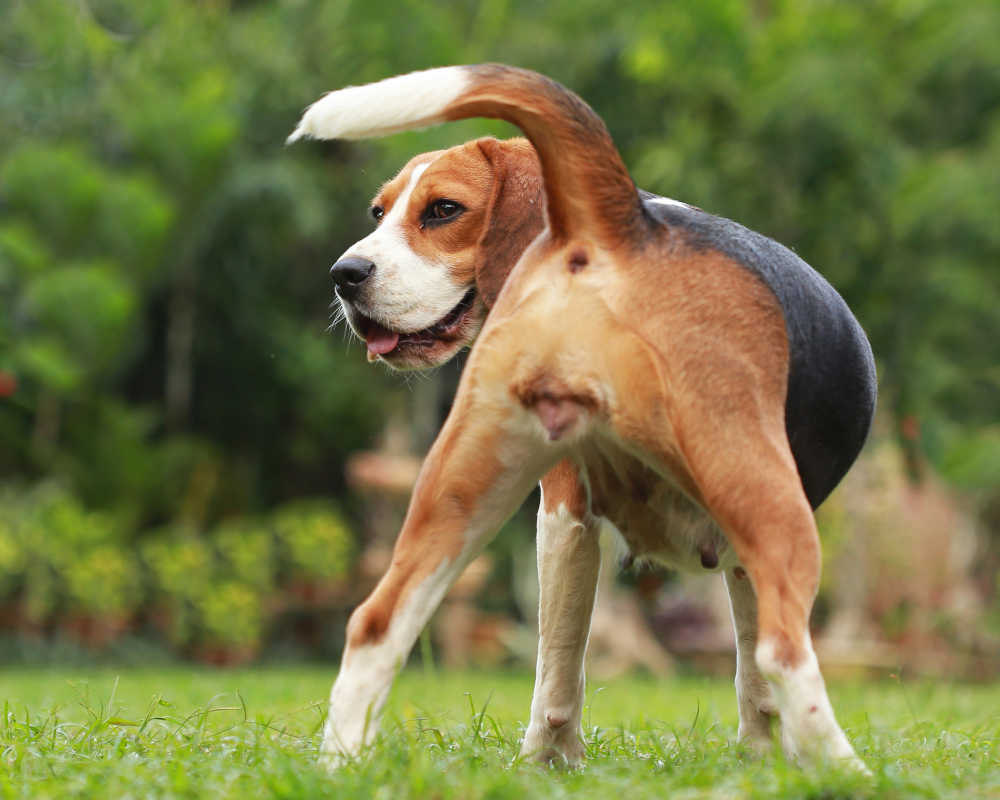
Often the first sign of heat is swelling or enlargement of the vulva. There may also be bright red, bloody discharge. During this time, dogs may also be a little lethargic and even agitated.
2. Bloody Discharge
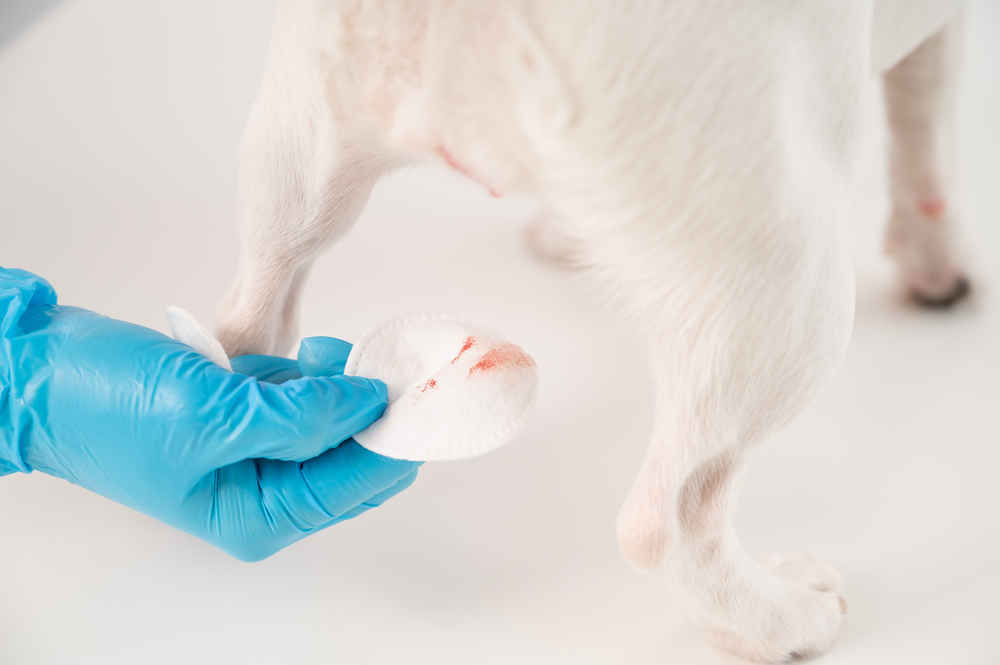
Around the time you may notice vulvar swelling, your dog may also start having bloody discharge. This discharge will start light, turn heavier and brighter red, and then decrease and turn pinkish near the time of ovulation and receptivity to male dogs. Doggie diapers are a great way to decrease the mess in your home that females in heat may bring.
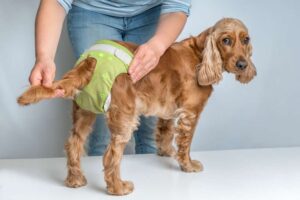
3. Attracting Male Dogs
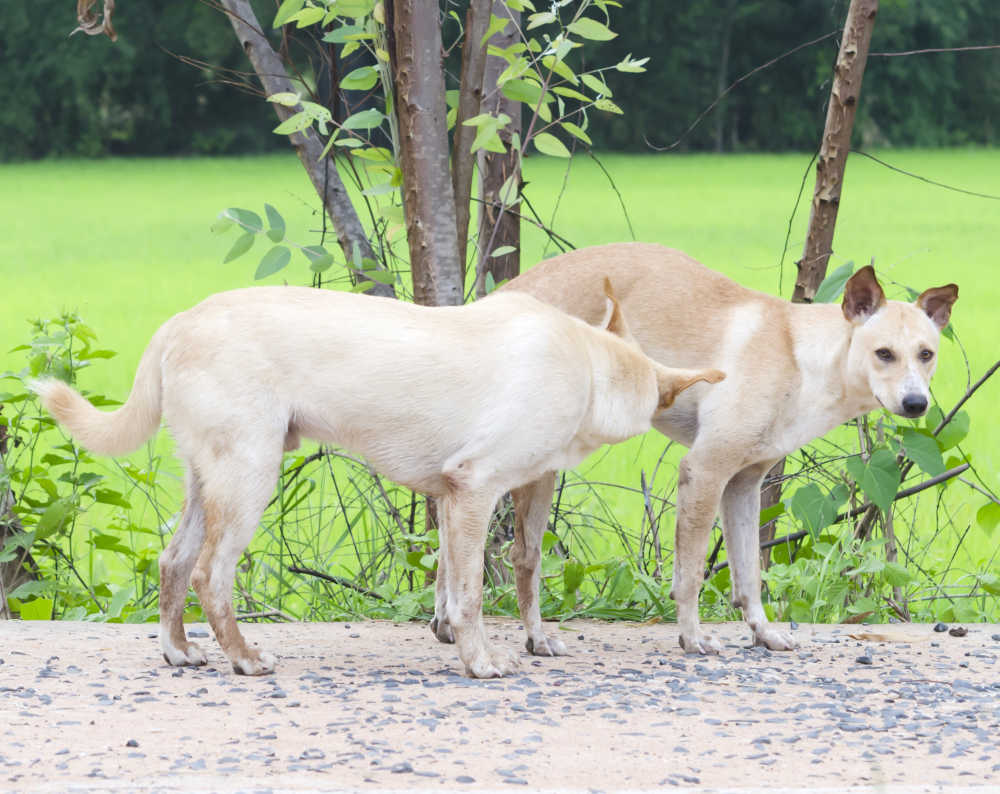
A female dog coming into heat is going to attract male dogs due to an increase in pheromones excreted in her urine. They may sniff and even try to mount her, but she may growl or even nip at them until she is in the estrus phase.
4. Receptivity to Male Dogs
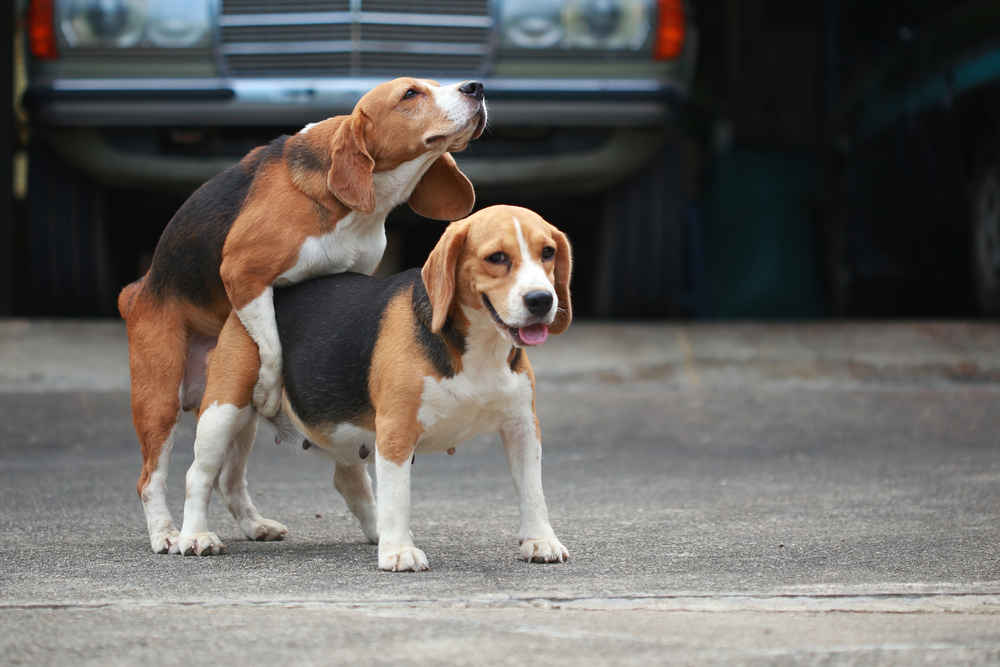
Once a female dog reaches estrus, she will stop being aggressive towards males and will instead become very affectionate and even present her hind end to them. She will also let them mount her.
For a great overview of the estrous cycle of dogs, including abnormalities, check out this video.
What to Do When Your Dog is in Heat
Going into heat is a natural process that intact females will quickly become familiar with. However, there are a few things you can do to help make this process a little easier for everyone.
- Give her her own space. Keep her separate from other dogs, especially if you don’t want her to get pregnant.
- Always supervise her when she goes outside, even if you have a fenced yard.
- Only walk on a leash, preferably without a lot of other dogs around.
- Use diapers to help contain the spotting mess.
- Ensure anyone who might be caring for your dog is aware so that they can keep intact males away from your dog.
When to See a Vet When Your Dog is In Heat
Going into heat is such a natural process that it rarely requires any veterinary attention. However, there are areas where your pup can get into trouble, especially if she’s having an abnormal heat cycle.
Remember that every dog is different and each stage of her cycle is going to last a different length of time than other females. But that doesn’t mean you should ignore the length completely. If your dog seems to running through her heat cycle especially quick or taking an extraordinary amount of time, see your vet.
You’ll also want to make a stop if your pup seems to be bleeding an excessive amount. Most dogs in heat will leave spots or drips of blood in her bed or on the floor. There shouldn’t be a steady stream and the discharge shouldn’t have a foul odor.
Once your dog is finished with heat and has entered the diestrus phase, a uterine infection called pyometra is a concern. Dogs with pyometra usually quickly become very lethargic, don’t want to eat, drink more water and may have vomiting and diarrhea. Some dogs will have a foul-smelling discharge as well. Pyometras require immediate veterinary attention.
If you’re looking to breed your dog, you may be interested in when she has ovulated. You can visit your vet to get blood tests that will measure the amounts of hormones in her blood to determine when the best time to breed her will be. Most pet parents will see the vet around 7-9 days after they first notice bleeding.
Dog Heat Behavior FAQs
How do I know what stage of heat my dog is in?
Each stage of estrous comes with its own set of behavioral and physical changes. You can usually tell what stage based on these changes. You may also be able to tell based on the number of days it’s been since you noticed these changes. The ultimate way to tell what stage of heat your dog is in is to have a veterinarian examine a vaginal swab.
What can I do to comfort a dog in heat?
Young dogs may have a difficult time with their first estrous cycles. They might not understand what is happening to their body and become a little nervous. You can help her by giving her a quiet, calm place to lay, giving her lots of attention, and distracting her with games or exercise. If you don’t want her to become pregnant, make sure she is safely kept well away from other dogs. Don’t trust fences, male dogs can be very determined, so proper supervision is also a must.
Are dogs in pain when in heat?
Normal heat cycles do not cause pain in dogs. Even though it causes bleeding, it’s not painful. She may be a little jittery or aggressive due to hormones as well, but it’s not because of pain. If your dog does seem in pain while in heat, be sure to see your vet.
Do female dogs have periods?
Female dogs have heat cycles that are similar to a human’s periods, but they aren’t quite the same. They all go through ovulation, a period where they are capable of becoming pregnant, and a recovery period, but the timing and characteristics are different.
How long does the heat cycle last?
Dogs are in heat for 1-2 weeks. This means that this is the time they are receptive to a male and are capable of becoming pregnant.
How many times per year do dogs go into heat?
Most dogs will go into heat every six months, or twice a year. Smaller breeds may go in three times, and larger breeds may only go once.
Related posts: pictures of female dogs in heat
Disclaimer: This website's content is not a substitute for veterinary care. Always consult with your veterinarian for healthcare decisions. Read More.



Be the first to comment